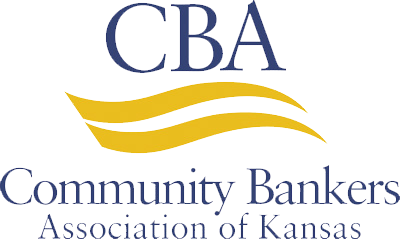We have all heard the old maxim, “How can you expect them to do things right in the first place if you don’t tell them how to do it.” That is particularly true in the area of compliance. You cannot expect employees to comply with the plethora of laws and regulations that impact banking today if you have not given them appropriate instruction on what is required of them. This is accomplished through compliance training.
Training is the foundation or bedrock on which you can build a compliance program that should flourish in the current compliance environment. Regulators expect financial institutions to manage their compliance function and any risk area effectively. In addition, within the past 20-plus years, the industry moved into a new age for compliance management — one calling for a new management model or paradigm where more responsibility and involvement are pushed down to the front lines rather than being retained centrally by a single compliance officer or department. For this paradigm to work, those on the front lines must be well-versed in the compliance responsibilities that their jobs entail.
What is effective and works will vary from one institution to another, but we will try in this article to point you in the right direction to set up a successful compliance training program. We will help you ferret out how to approach this process and give you ideas on how to tackle such training and end up with a positive experience for both the trainer and the trainees.
Reasons To Train
The reason you want to train your staff in compliance matters is to move toward the ideal of having them do the compliance-related aspects of their jobs right the first time, every time. Making your compliance function work this way will take you a long way toward good risk management — reducing the risk of noncompliance.
Education of the bank’s board of directors, management and staff is essential to maintaining an effective compliance program. Board members should receive sufficient information to enable them to understand the bank’s compliance responsibilities and the need for adequate resources (staff, technology, software, etc.) to meet those obligations.
The federal banking supervisors have identified a number of risk categories they expect financial institutions to monitor and manage. Compliance is an important factor in at least a few of the following recognized classifications:
- Compliance risk: Identified first by the Office of the Comptroller of the Currency (OCC) as a separate risk category, this is the risk to earnings or capital from violations of the requirements of laws, regulations, prescribed practices, ethical standards or other rules. This risk can also arise in areas of uncertainty where laws or regulations are ambiguous or untested. Compliance risk is one part of the “legal risk” identified by the Federal Reserve Board (FRB) in its risk rating system.
- Transaction or operational risk: This classification of risk is recognized by regulators in their published standards. It is the risk to earnings or capital from problems with service or product delivery and can arise from inadequate information systems, operational problems, breakdowns in internal controls, fraud or unforeseen disasters.
- Reputation risk: Negative public opinion or publicity can lead to risk to earnings or capital through litigation, decline in customer base, revenue reductions, reduced ability to offer competitive products, other financial loss or reputation damage.
The prudent financial institution will strive to avoid problems in these areas (and other risk categories identified by the banking supervisors). An important component of this risk-avoidance process is training for all employees that is appropriate to their particular jobs, and it must include compliance issues that affect them.
Effective compliance training also supports another ideal of compliance management in the current era — decentralizing and fixing accountability for compliance performance standards. It is most effective and efficient for a financial institution to “push down” responsibility for compliance performance as close to the front line as possible. This has to involve a buy-in by line managers and staff. But you cannot expect them to see the importance of these issues if you do not provide them with adequate information. Neither can you expect them to perform well if you have not given them the tools and knowledge needed to succeed. Good training furnishes the information necessary for the accomplishment of that goal.
Who and What To Train
The first order of business in structuring a compliance training program is to assess the needs of the institution. Among the questions you should ask in this exercise are:
- What types of products and services are offered?
- What regulations impact these processes?
- What is the current knowledge level of the staff involved in these various areas?
- How much turnover or migration within the institution occurs?
- Where have problems been identified in the past by compliance monitoring, audits and examinations?
- What is the pace of new product development and introduction?
- What are the areas where regulatory change is occurring (and expected)?
- Where are the risks to the institution?
- Which risks are higher priorities?
These are at least some of the questions that must be answered in this initial assessment phase. Actually, the needs assessment should be an ongoing, dynamic process since neither the institution nor the regulatory environment is stagnant.
One result of the needs assessment will be a list of laws and regulations that must receive particular emphasis in the compliance training to come. This list will likely include Truth in Lending (Regulation Z), Fair Lending (Regulation B and the Fair Housing Act), Real Estate Settlement Procedures Act (Regulation X), flood insurance and other laws and regulations for lending training. Deposit and operations topics likely will include Truth in Savings (Regulation DD), Expedited Funds Availability (Regulation CC), Electronic Fund Transfers (Regulation E) and the Bank Secrecy Act (BSA), among others.
Another product of the needs evaluation will be a listing of departments, functional areas and job positions that should be targeted by compliance training. This list should include loan officers, underwriters, originators and other customer-contact and loan documentation staff in the lending area. Deposit personnel who need to receive compliance training, include customer service representatives, tellers, new accounts staff, bookkeeping personnel and all other customer-contact staff.
Choosing Format and Media
Once the “what” and “who” have been ascertained, then you can move on to how you will do it. Here you have a wide variety of choices and decisions:
- Will you handle the training internally, or will you use outside trainers or events (seminars, schools, etc.)?
- Will you use online programs, classroom-style sessions or individual consultations?
- Will compliance training be presented separately or integrated into other job-related instruction?
The teaching method selected will depend a lot on the culture of your institution. Is individualized, on-the-job type training the norm? Or are online training programs widely utilized? Or are training sessions often presented in larger, classroom-style settings? Or is there a mixture of these and other methodologies (memoranda, manuals, etc.)?
Another factor in the methodology decision is the wide availability of online training programs, many at low or no cost. Various national and state bankers associations make many online training programs available to their members at no additional cost. Beyond these offerings, a number of vendors provide online programs available to bankers covering all areas of banking, including compliance issues.
A successful training program likely will encompass some variety in teaching media. Different ways of teaching work better in different situations, and some are chosen by the necessity of the moment’s needs or the pressure of immediate problems. Also, some methods work better for some subjects and in some situations than others.
One element that should be included in any training process is some type of testing. You need to have some way of measuring the success of any training, and you should keep records of these results. The testing outcomes can point to issues that need further attention or to particular staff members who need more help to understand the rules that they must master.
Many online training programs blur the distinction between training systems and reference/performance support systems. These systems will be easy to update, contain the tests and permit both initial self-paced training and ongoing just-in-time learning and support.
Organizing Information
Besides the choices in teaching media and methodology, there are alternatives to how compliance information can be organized for presentation. In some situations, instruction organized by regulation makes sense, particularly when a new regulation is released, when major changes are made in an existing one, or when compliance reviews or examinations reveal problems in a particular area. However, many times it is easier for the students to learn to apply regulatory requirements if a more transactional approach is taken or if compliance issues are woven into other job-related training.
The level of instruction needs to be geared to the breadth of compliance knowledge and understanding among the target audience. You do not want to bore the knowledgeable by dwelling too long on basic information, nor do you want to go over the heads of the novices by speeding past the basics right to detailed, high-level issues.
Another potential problem area is in gearing the content to the audience. Credit card personnel are not likely to be very interested in (or in need of) information about the right of rescission and mortgage servicing transfer notices. Similarly, mortgage-lending staff will not be drawn into instruction on tabular credit card application disclosures and open-end periodic statements (unless they are also involved in home equity line lending).
Teaching Style
A crucial issue for instructor-presented (as opposed to computer-based or similar format) training is the selection of the instructor. You want to have someone comfortable with presenting to and teaching others and, preferably, someone with experience in training. In larger institutions, the training department can help in this effort, perhaps with the compliance officer attending to handle questions that probe deeper into a rule’s requirements or into more complicated situations.
If no such experienced training resources are available, the institution should consider turning to outside consultants to provide this crucial instruction to its employees. In fact, outside vendors can handle most of the preparation as well as the presentation. Your involvement is cut back to one of coordinating facilities and handout materials and in helping set the subject matter and scope of the training. The professional trainer tackles most of the other jobs, including the one of actually teaching the intricacies of the particular rule(s).
When To Train
All employees need to receive at least some basic compliance training as part of their initial job training. As with any training, the level of detail depends on the particular position and job grade.
Periodic refresher training must also be given to all employees. Some rules require this, such as the Bank Secrecy Act and Expedited Funds Availability regulations. However, even when not required explicitly, the financial institution supervisors expect that the expertise of all employees will be maintained by an appropriate amount of ongoing training. Such regular retraining is also in the institution’s best interest to help minimize the risk of noncompliance and can be an integral part of your risk management program.
Beyond the routine refresher training, any time a new rule is issued or an existing one is changed, all affected personnel need to be updated on the new requirements and expectations and how they must implement them.
Keeping Records
Part of any training program should be an appropriate method of keeping records. At its most basic level, this will provide documentation of who received what compliance training and when. Records that can be kept might include sign-up sheets for in-person training, completion and testing results for online programs, sample training materials and so forth.
Maintaining appropriate records allows the bank to make sure it is keeping up with compliance training needs throughout the bank and that all affected personnel are receiving (and completing) appropriate training. A side benefit of good records is that the bank can demonstrate to examiners how it is meeting their expectations in this area.
The Bottom Line
As we have discussed, appropriate training is crucial to success in managing the risks associated with the profusion of consumer protection laws and regulations. The elements we have reviewed can also be applied to training in other areas or aspects of employees’ jobs, not just to compliance.
Effective training is a good preventative measure to avoid or reduce noncompliance and its associated risks. It also can contribute to better levels of customer service as staff members become familiar with what is expected of them and why particular disclosures must be given, or information must be collected. Not least among the benefits, knowledgeable employees performing their jobs right the first time can significantly reduce the operating costs of the institution, slashing expenditures for correcting errors or oversights and preventing costs associated with litigation or regulatory enforcement actions.
William J. Showalter, CRCM, CRP is a Senior Consultant with Young & Associates, Inc. (www.younginc.com), with over 35 years of experience in compliance consulting, advising and assisting financial institutions on consumer compliance and compliance management issues. He also develops and conducts compliance training programs for individual banks and their trade associations and has authored or co-authored numerous compliance publications and articles. Bill can be reached at (330) 678-0524 or wshowalter@younginc.com.









